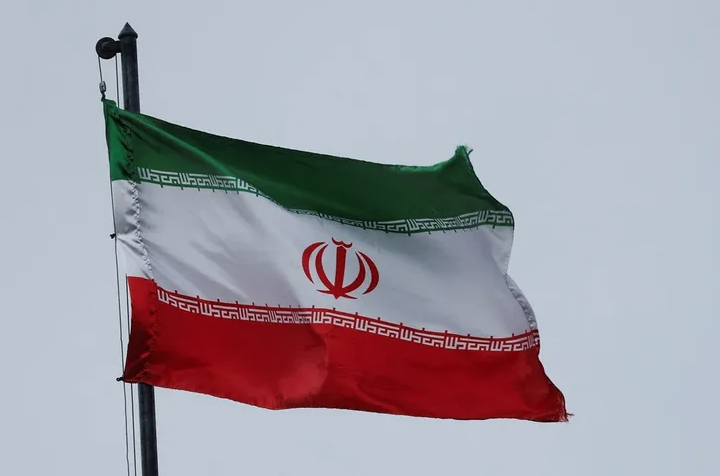Iran’s historical, socio-political and socio-economic structure is very different from other countries in the region such as Iraq, Syria, Libya and Lebanon. When we look at Iran’s political history in the 20th century, we see that Iran went through three major revolutions: the Constitutional Revolution of 1906, the oil nationalization movement led by Mohammad Mossadegh in the early 1950s, and the 1979 revolution. For those who do not consider the so-called Islamic Revolution of Iran as a natural process in itself, it is the result of the US-Nato Green Belt project. This is an analysis that is open to debate these days. One could also theorize that the Islamic State of Iran has come to an end with the desired results of the Green Belt project, which has lost its popularity today. While conspiracy theories are always in the back of our minds, I would like to note that realpolitik alone cannot explain political changes and transformations.
Many Iranians characterize the demonstrations across the country as a gradual revolution, not just scattered protests and demonstrations as reported by Iran’s official agencies. While in some countries revolutions have taken place in less than a month, as we pointed out in the paragraph above, Iran’s political history tells us that a revolution is often preceded by months or even years of growing protests.
In Iran, the protests are now in their third month. This is unprecedented in the Islamic Republic’s four decades of rule. The protesters are not demanding policy change, but regime change. As one Iranian activist said in an interview with Reuters, “Hey world, hear me! I want a revolution! I want to live freely and I am ready to die for it! I would rather die from their (security forces’) bullets in protests for freedom than to die every minute under the oppression of this regime.” These words should be read as the footsteps of a slow revolution in Iran.
The fear of a possible revolution is also felt by some Iranian officials. In an interview with the state-controlled Bahar News, Mohammad Reza Tajik, a member of the reformist faction, said: “The current political situation in today’s society has passed the period of fear and entered the period of anger. The current movement is associated with a kind of happiness and enthusiasm for life. Today’s activist is ready to sacrifice his life to achieve freedom. Today’s activist thinks that only the language of anger is the solution and other languages go unanswered and unheard. Over the years we have sown the seeds of hatred and now we are reaping great anger.”
If we go back to the events leading up to the Islamic Revolution in Iran, we can better understand what is happening today.
The 1979 revolution in Iran did not take place in a short period of time, unlike the 2011 revolution in Egypt, which began on January 25 and culminated in Hosni Mubarak’s resignation from the presidency on February 11. In fact, protests in Iran began in October 1977, about a year and a half before the revolution, and continued until 1979, when the Shah’s dynasty was overthrown.
In 1978, ordinary people and various opposition groups came together. But the international community did not believe that these protests could lead to a revolution. This was probably because the Shah had been successful in creating the image outside Iran that he was a king with legitimacy, a strong army and popular support. But as the Shah’s security forces killed people, the resistance campaign and protests grew. Eventually, an organization led by Ayatollah Khomeini led the revolution in February 1979 after the Shah fled the country.
Today, the protests continue to grow stronger as the Iranian regime uses violence against the protesters. It is worth noting that funeral ceremonies in Iran are held on the third day, seventh day and fortieth day after the burial. These ceremonies have now become a platform for mass protests and are making the regime’s grip on power even more difficult. As the regime kills more protesters, it finds itself in an uncontrollable circle of anger and resistance.
Some elements of the ongoing civil disobedience and popular resistance are similar to what existed in 1979. For example, at that time, most Iranians were struggling to establish a representative and democratic system of government. They were dissatisfied with Shah Mohammad Reza Pahlavi because of widespread political and financial corruption and human rights abuses.
In addition to these factors, people are fed up with the restrictive rules currently imposed by the ruling clerics, the so-called morality police, the Islamic Revolutionary Guard Corps and its paramilitary group, the BSESC. Many people do not want a theocracy that imposes its extremist beliefs and teachings on society. Many people also want better living standards and economic equality.
It is ironic that Iran, which for over forty years has been trying to export its Islamic revolution to other countries, is resorting to every possible brutal tactic, according to reports from inside the country, to prevent a slow revolution at home.
Let’s continue by developing a conspiracy theory again; there were many who thought that the Green Belt project had completed its regional function with America’s departure from Afghanistan. There was also a widespread view that it was merely “a tactical retreat by the US or, to go further, a loss in Afghanistan”. The idea that the ceding of Afghanistan to the Taliban had something to do with Iran was not something that was given much thought. Although I personally pointed this out, sometimes in short paragraphs on social media, I don’t think anyone else did.
For a long time now, Sunnis and Shiites in the region – especially in Iraq and Yemen – have been at each other’s throats, largely with Iranian involvement. Even though radical terrorist organizations like ISIS and al-Qaeda have been the instigators of the sectarian conflict, it has been Iran that has perpetuated this process. Iran thought that the way to protect its revolution was to conduct operations in these regions, and it has defined its strategy accordingly. But what it overlooked was that this was also what America and its allies wanted. A state of faith discredited by sectarian wars would be doomed to lose on its own soil. By becoming a party to the sectarian war, Iran lost its credibility among its own people and among the regional states. Although the propaganda that this struggle was a liberating struggle for the Iranian state and people was successful at first, economic problems, corruption, internal political conflicts, endless war weakened Iran… And today we see that the Iranian state has failed to prevent these demonstrations. Iran has neither the political, ideological nor economic power to prevent these demonstrations. Because it has weakened itself by fulfilling its mission of destabilizing the region through ideological and religious bigotry. This process, which continued with the Green Belt project and then with various political definitions, was to turn the Middle East into a center of endless sectarian and ethnic wars… Iran fulfilled this task with the ideological bigotry in which it was mired.
During the Arab Spring and its aftermath, Turkey protected itself from being dragged into sectarian bigotry, war and conflict. The fact that it is not an ideological religious state undoubtedly contributed to this. However, I think it is important to recognize the danger of being dragged into ideological obsession and bigotry inherent in Turkey’s operations in Syria. Especially by recalling the fact that some newly established parties in the country are using ethnic racism and immigrant hostility in their politics.





